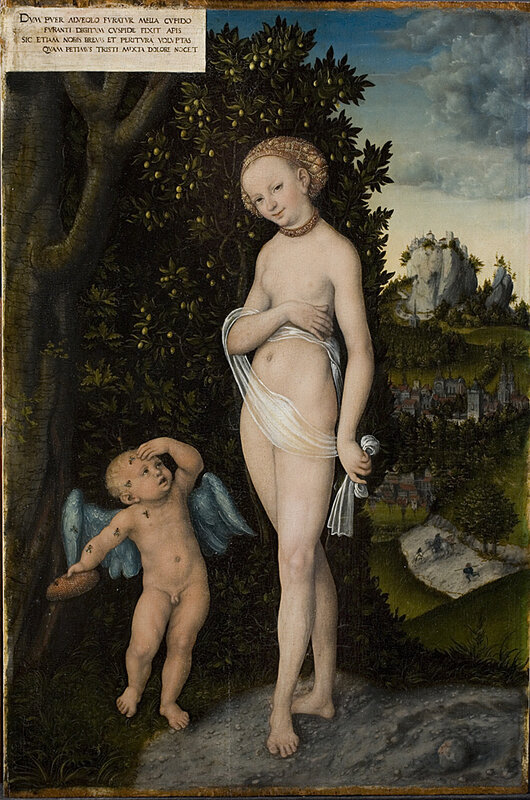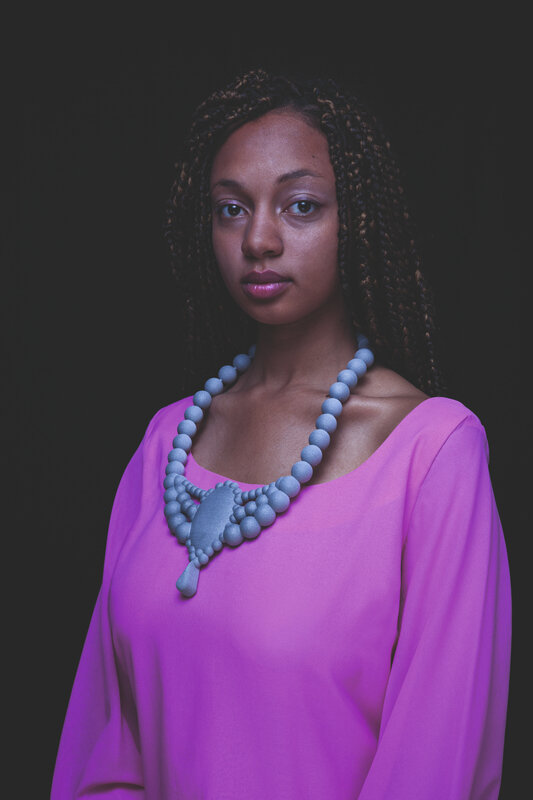'Lucas Cranach – Renaissance Beauties' at Sinebrychoff Art Museum, Helsinki, 26 sep 2019 - 5 jan 2020

Lucas Cranach the Elder (Kronach 1472–1553 Weimar), Portrait of a young woman, 1525), oil on beech wood, collection O. W. Klinckowström, Finnish National Gallery. Photo: Kansallisgalleria, Hannu Aaltonen. Courtesy Sinebrychoff Art Museum.
Helsinki- Renaissance Beauties is the first monographic exhibition in Finland on the oeuvre of the great German Renaissance master Lucas Cranach the Elder (1472−1553). The works on display include paintings and prints from the collections of European museums. The paintings in the collections of the Sinebrychoff Art Museum, Portrait of a Young Woman (1525) and Lucretia (1530), are the only works by Lucas Cranach in Finland. They represent popular themes in the artist’s oeuvre: female portraits and beauties, both rendered in a personal and recognizable style. These works constitute the starting point for the exhibition.

Lucas Cranach the Elder workshop, Portrait of a Young Woman (Princess Emilia of Saxony?), before 1537, oil on beech wood. Statens Museum for Kunst, Copenhagen. Courtesy Sinebrychoff Art Museum.

Lucas Cranach the Elder (Kronach 1472–1553 Weimar), Lucretia, 1528, oil on beech wood, Nationalmuseum, Tukholma, Stockholm. Courtesy Sinebrychoff Art Museum.

Lucas Cranach the Elder (Kronach 1472–1553 Weimar), Lucretia, 1530, oil on beech wood, Finnish National Gallery. Photo: Kansallisgalleria, Hannu Aaltonen. Courtesy Sinebrychoff Art Museum.

Lucas Cranach the Elder (Kronach 1472–1553 Weimar), Lucretia, after 1537, oil on beech wood. Kunstsammlungen der Veste Coburg. Courtesy Sinebrychoff Art Museum.

Lucas Cranach the Elder (Kronach 1472–1553 Weimar), Venus and Cupid the Honey Thief, 1527, oil on beech wood. Statens Museum for Kunst, Copenhagen. Courtesy Sinebrychoff Art Museum.

Lucas Cranach the Elder (Kronach 1472–1553 Weimar),Venus and Cupid the Honey Thief, 1530, oil on beech wood. Staatliche Schlösser, Gärten und Kunstsammlungen Mecklenburg-Vorpommern. Courtesy Sinebrychoff Art Museum.

Lucas Cranach the Elder (Kronach 1472–1553 Weimar) workshop, Adam and Eve, c. 1512, oil on lime wood. Kunstsammlungen der Veste Coburg. Courtesy Sinebrychoff Art Museum.

Lucas Cranach the Elder (Kronach 1472–1553 Weimar) and workshop, Matched Lovers, c. 1530, oil on beech wood. National Gallery in Prague. Courtesy Sinebrychoff Art Museum.

Lucas Cranach the Younger (Wittenberg 1515–1586), Diana and Actaeon, c. 1550, oil on wood. Polo museale del Friuli Venezia Giulia, Trieste. Courtesy Sinebrychoff Art Museum.

Circle of Lucas Cranach the Elder, Dido, 1547, oil on lime wood. Kunstsammlungen der Veste Coburg. Courtesy Sinebrychoff Art Museum.

Lucas Cranach the Elder (Kronach 1472–1553 Weimar), The Ecstacy of St Mary Magdalene, 1506, woodcut. Statens Museum for Kunst, Copenhagen. Courtesy Sinebrychoff Art Museum.

Lucas Cranach the Elder (Kronach 1472–1553 Weimar), Venus and Amor, 1509, woodcut. Statens Museum for Kunst, Copenhagen. Courtesy Sinebrychoff Art Museum.
Cranach’s fascinating and enigmatic paintings have spoken to artists over the ages. Among the best-known examples are probably the interpretations by Picasso, represented in the exhibition by some prints.
A present-day perspective on the handsome jewellery depicted in Cranach’s works is offered by a number of impressive items created by German jewellery artists.

Pablo Picasso (Málaga 1881–1973 Mougins), Woman's Bust after Cranach the Younger, 1958, linocut. Finnish National Gallery. photo: Kansallisgalleria, Yehia Eweis. Courtesy Sinebrychoff Art Museum.

Pablo Picasso (Málaga 1881–1973 Mougins), Venus and Cupid. 1949, aquatint, engraving and drypoint. FCollection: Jeppe Lahtinen. Courtesy Sinebrychoff Art Museum.

Franziska Höhne, „reduction-hacked renaissance“, 2014, alumide, selective laser sintering, owned by artist. Courtesy Sinebrychoff Art Museum.

Kerstin Mayer, „Perlenreif“, 2005, gold, sweetwaterpearls, owned by artist. Courtesy Sinebrychoff Art Museum.

Svenja John, „Wittenberg 2014“, 2014, Polycarbonate, Makrofol®, owned by artist. Courtesy Sinebrychoff Art Museum.

Mareen Alburg Duncker, „für Eva“, 2014, gold, figs, varnish, emerald, pearls, owned by artist. Courtesy Sinebrychoff Art Museum

Antje Bräuer, „Oversized“, 2014, beech plywood, steal, silver, owned by artist. Courtesy Sinebrychoff Art Museum.

Georg Dobler, untitled, 2014, Silver, coral, plastic. Courtesy Sinebrychoff Art Museum.

/https%3A%2F%2Fprofilepics.canalblog.com%2Fprofilepics%2F1%2F0%2F100183.jpg)
/https%3A%2F%2Fstorage.canalblog.com%2F03%2F02%2F119589%2F96711876_o.jpg)
/https%3A%2F%2Fstorage.canalblog.com%2F11%2F31%2F119589%2F94773502_o.jpg)
/https%3A%2F%2Fstorage.canalblog.com%2F20%2F83%2F119589%2F94772815_o.jpg)
/https%3A%2F%2Fstorage.canalblog.com%2F26%2F72%2F119589%2F75604929_o.jpg)
/https%3A%2F%2Fstorage.canalblog.com%2F59%2F60%2F119589%2F26458628_o.jpg)


/http%3A%2F%2Fstorage.canalblog.com%2F25%2F77%2F119589%2F129711337_o.jpg)
/http%3A%2F%2Fstorage.canalblog.com%2F60%2F34%2F119589%2F128961949_o.png)
/http%3A%2F%2Fstorage.canalblog.com%2F84%2F21%2F119589%2F128701730_o.jpg)
/http%3A%2F%2Fstorage.canalblog.com%2F96%2F14%2F119589%2F128351398_o.jpg)